The exhibition showcases nearly 180 documents, photographs, and artifacts under three themes: Ho Chi Minh - Cultural figure, Prison Diary - A National Treasure, and Prison Diary - Spreading values of humanity.
It focuses on the portrait of the author, Ho Chi Minh, the origins of the work, including a collection of 53 handwritten pages comprising 133 poems and various notes from the Prison Diary. Especially, in the 80 years since its creation, the Prison Diary has served as an inspiration not only for researchers but also for Vietnamese and international artists, including the art of calligraphy.
Created 80 years ago (1943-2023), the Prison Diary embodies the intellectual and cultural significance of a great individual, with a noble aspiration for "Independence for the nation and freedom for the people."
During his revolutionary activities, Ho Chi Minh left behind a priceless treasure of literary works, including major works of essays, journalism, literature, poetry, and more. Among them, five works have been recognized as National Treasures by the State: The Revolutionary Path; The Prison Diary; The National Call for Resistance; The Call to Arms for the Whole Nation and Soldiers; and his Will.
The Prison Diary is a collection of Mandarin poetry written by President Ho Chi Minh during the period when he was illegally detained by the local authorities of Chiang Kai-shek from August 1942 to September 1943 while he was on a mission in China.
This is an important historical document and, at the same time, a great literary work that reflects the thoughts and emotions of President Ho Chi Minh. As former Prime Minister Pham Van Dong once said, "The poetry collection Prison Diary by President Ho Chi Minh is a treasure trove of various aspects of life, humanity, and art, whose richness needs to be continuously studied."
The work was first translated into Vietnamese and widely published in 1960, spreading and deeply influencing the social life of Vietnam. It has not only gained extensive popularity within the country but has also been highly regarded and embraced by international friends. It has been translated into multiple languages such as English, Portuguese, German, Korean, Myanmar, Russian, Japanese, French, Romanian, Czech, Chinese, and Spanish.
Some images from the flower offering ceremony and exhibition:
    |
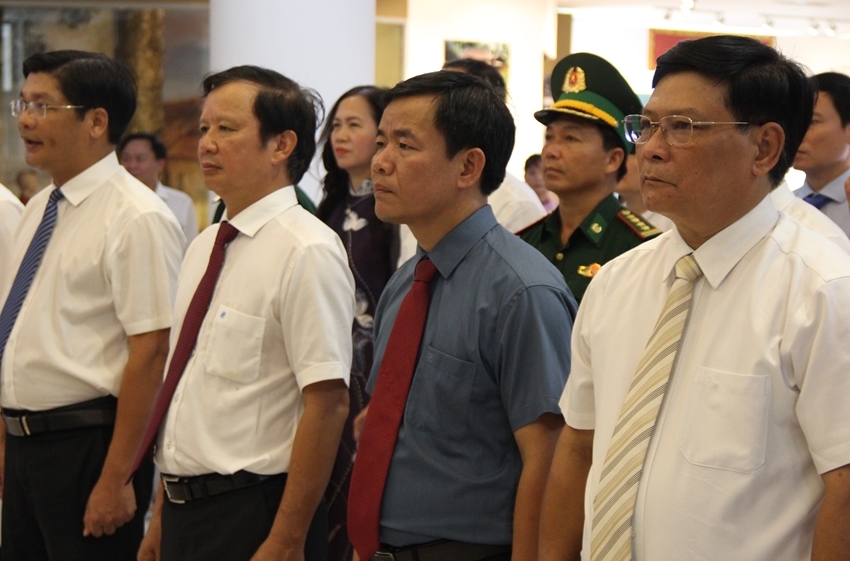 |
| Secretary of the Provincial Party Committee, Le Truong Luu (second from the left), along with provincial leaders, attending the flower offering ceremony |
    |
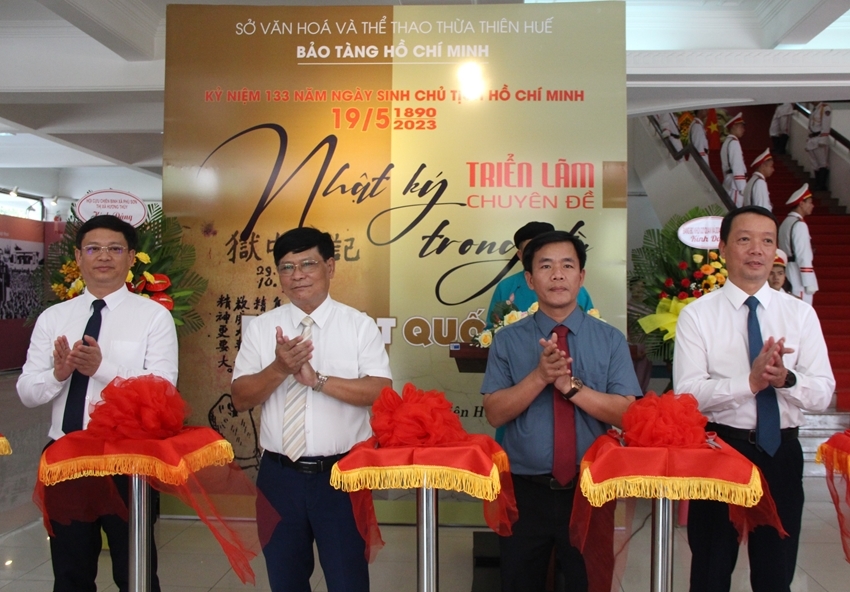 |
| Chairman of the Provincial People's Committee, Nguyen Van Phuong (second from the right), along with delegates, cutting the ribbon to open the exhibition " Prison Diary - A National Treasure” |
    |
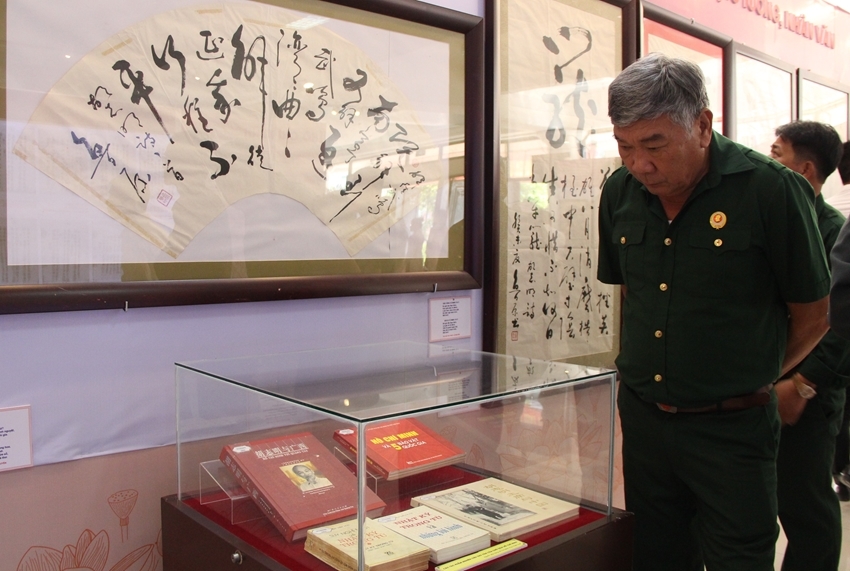 |
| The exhibition introduces nearly 180 documents, photographs, and artifacts under three themes |
    |
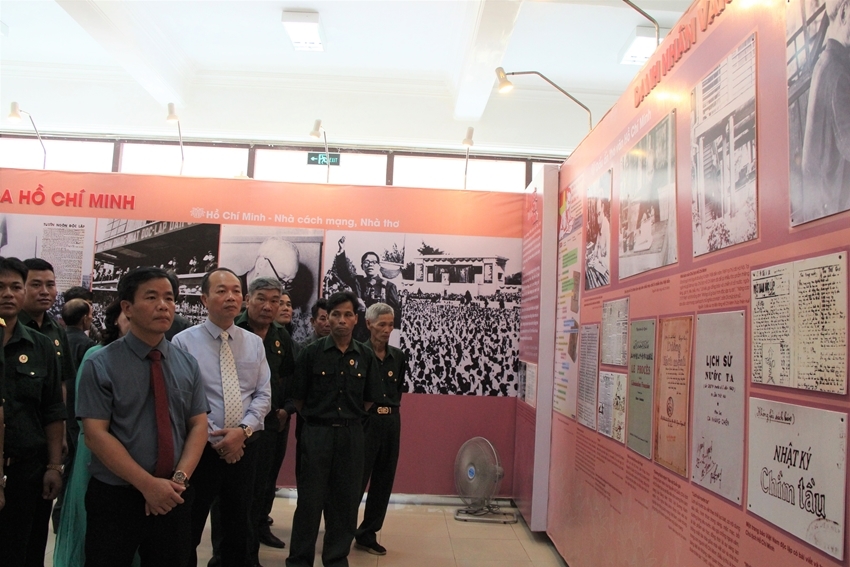 |
| The exhibition focuses on introducing the portrait of the author, Ho Chi Minh, the origins of the work, a collection of 53 pages of handwriting, 133 poems, and various notes from the Prison Diary |
    |
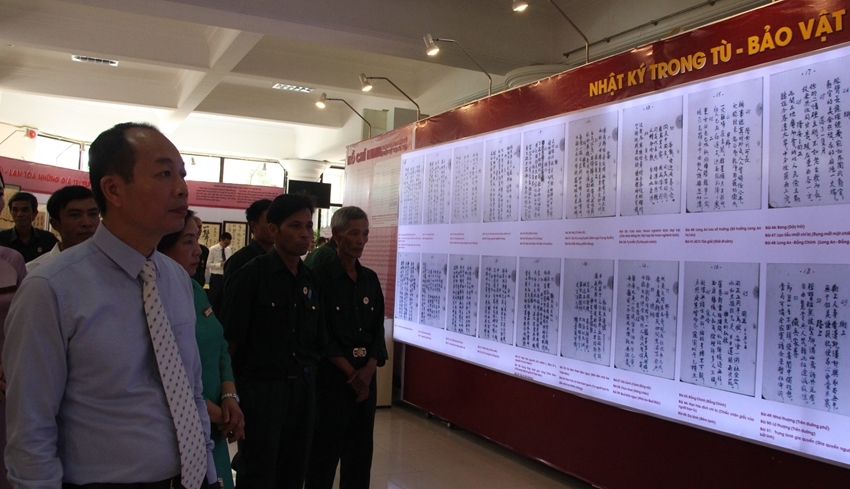 |
| The Prison Diary contains the intellectual and cultural significance of a great individual |
    |
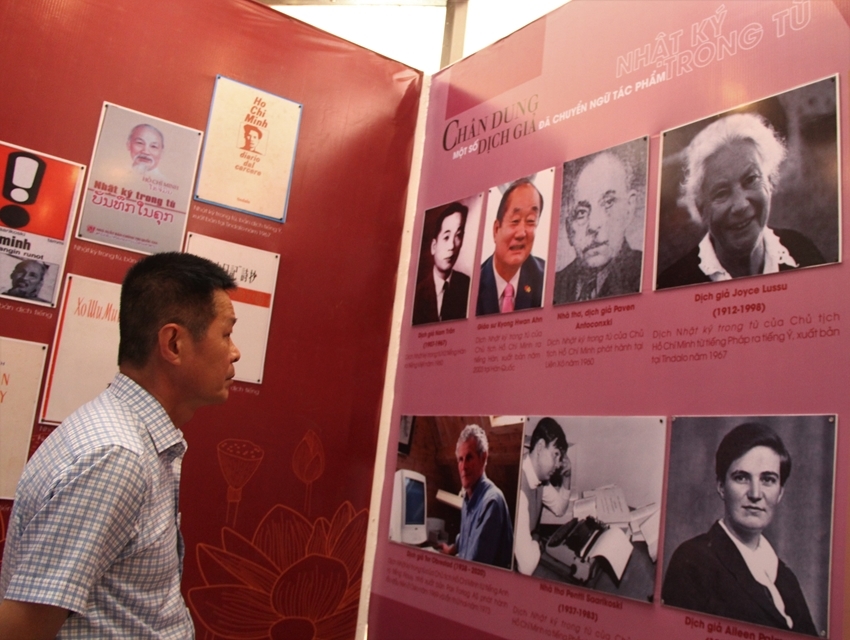 |
| A space introducing the portraits of the translators who translated the work "Prison Diary" into different languages |
